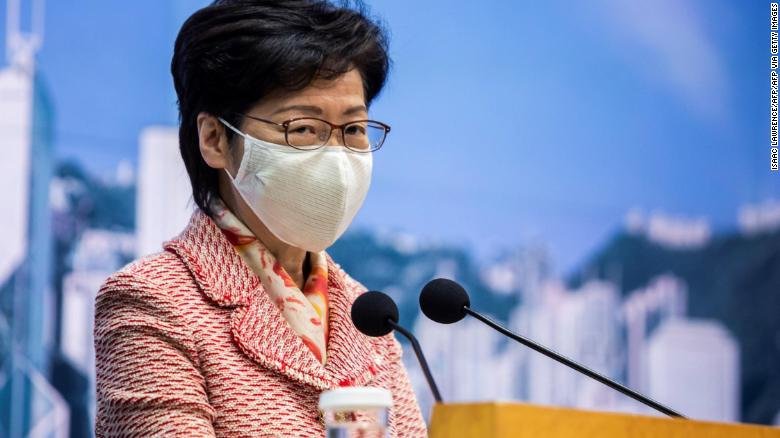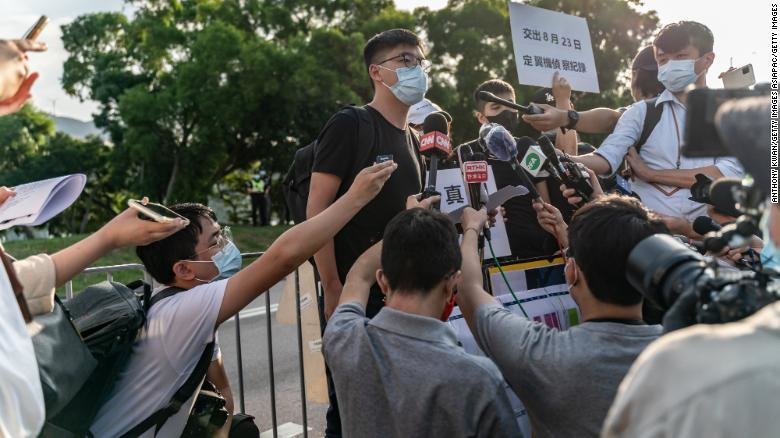When 12 Hong Kongers boarded a speedboat in the tiny fishing village of Po Toi O on August 23, they didn't realize they were headed for a world of trouble.
But high in the sky above them, someone may have been aware of the danger they faced.
Almost all the 12 were on bail or facing charges related to last year's anti-government unrest, and were hoping to follow other fugitives who had fled to the self-governing island of Taiwan, about 700 kilometers (440 miles) away.
A non-stop sea crossing in an open motorboat of the sort the 12 were using would usually take about 14 hours, dangerous and exhausting, with a severe risk of capsizing. But soon after the 12 crossed the maritime border between Hong Kong and the Chinese mainland, their boat was stopped by a coast guard vessel.
They have been detained in China ever since, denounced as "separatists" by Beijing and charged with a number of offenses, including illegally crossing a border and smuggling, with the threat of potentially more serious national security charges hanging over them. Back in Hong Kong, their families have desperately lobbied for their return, saying the 12 have been denied access to lawyers and abused while in Chinese custody.
Police in Shenzhen, across the China border from Hong Kong, said the "public security authorities will protect the legitimate rights of the suspects in accordance with the law."

Speaking Tuesday, Hong Kong leader Carrie Lam said the fugitives had "chosen to flee, and in the course of fleeing, they entered another jurisdiction and have committed a crime of illegally entering another place."
"They have to face the legal consequences in that jurisdiction," Lam added. "It is as simple and straightforward as that."
She refuted any suggestion that the Hong Kong government was aware of or involved in the case prior to the 12 being arrested.
But according to open-source flight data, first reported by Hong Kong newspaper Apple Daily, a Government Flying Services (GFS) aircraft was deployed to eastern Hong Kong, above Po Toi O, at about 4 a.m. on August 23, and stayed in the area for more than four hours.
The movement of the plane -- as recorded by FlightAware, an aircraft tracking service -- closely matches a timeline of the fugitives' journey released by the Hong Kong government.
The GFS plane circled the Po Toi O area until 7:30 a.m., when it started flying southeast, the direction the speedboat took to open waters. The Chinese Coast Guard stopped the boat at 9 a.m., less than an hour after the aircraft began making its way back to base.
According to information provided by GFS, the aircraft involved -- a Bombardier Challenger 605 -- is equipped for search and rescue, airborne surveillance and aerial photography.
Publicly available flight data for the particular plane, B-LVB, shows the August 23 trip was out of the ordinary: it did not fly before 7:30 a.m. any other day between August 18 and October 7, nor did it make any other flights of over three hours during this period.
On Thursday, Hong Kong activist Joshua Wong shared a partial flight plan he said had been leaked by a whistleblower within the flying service. The purported log, which CNN has been unable to independently verify, shows an operation labelled "P-OPS," which Wong said stood for "police operation," was ongoing for the period tracked by FlightAware.

A spokeswoman for Hong Kong's Security Bureau -- which oversees police, immigration enforcement, and the flying service -- said that "in accordance with the established practice, aircraft deployment and navigation details involved in flight missions will not be disclosed."
"The Hong Kong Police have time and again reiterated that the 12 Hong Kong suspects were arrested by the Mainland authorities for the offense of crossing the boundary illegally," she added. "The operation has nothing to do with the Hong Kong Police."
The suggestion that the government or police may have been aware the 12 fugitives, one of whom was facing charges under the city's national security law, planned to flee Hong Kong, and let them go -- exposing them to greater penalties in China -- has caused widespread outrage in the city.
"I'm shocked and appalled as the Hong Kong Government evidently colluded with Chinese authorities to put activists in greater danger, on matters clearly within its jurisdiction," Wong said in a statement.
In a press release Thursday, a group representing the fugitives' families accused the government of a "conspiracy" to hand over their loved ones to China, and called for their immediate release.
A small protest was held outside the flying service headquarters later Thursday, but it was soon broken up by police, who accused demonstrators of breaking coronavirus public gathering restrictions.
Hong Kong has its own judicial system, under the "one country, two systems" principle that was intended to safeguard the city's limited autonomy until 2047, with legal and human rights protections not enjoyed on the mainland.
Fear of being exposed to China's judicial system, where the conviction rate is more than 90% and political prosecutions are common, sparked protests against an extradition bill last year which transformed into months of anti-government unrest.
This year, as protests began to pick up again following a coronavirus-forced break, the Chinese government imposed the national security law on Hong Kong, criminalizing sedition, secession and subversion.
The law, which the government says is necessary to restore order, has caused several prominent activists to flee overseas.















